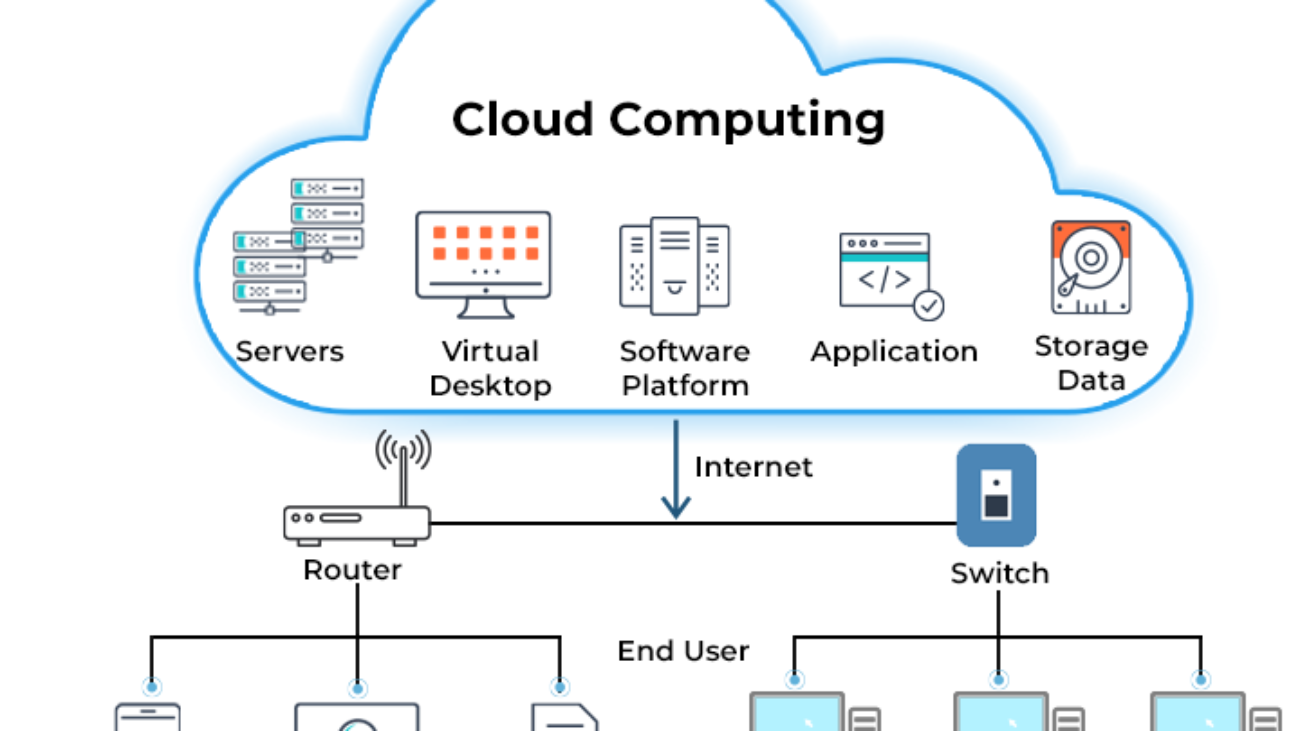Cloud computing has rapidly evolved from a niche technology into a fundamental part of modern business operations and personal technology. In today’s digital-first world, the scope of cloud computing is enormous, touching nearly every aspect of how businesses, governments, and individuals operate. As we look forward, cloud computing will continue to transform industries and the way we interact with data.
Here’s a closer look at the scope of cloud computing in the modern era:
1. Global Access and Flexibility
Cloud computing allows users to access data and applications from anywhere in the world. Whether you’re working from home, in a remote location, or traveling abroad, you can access your company’s resources or personal data with an internet connection.
- Scope: This flexibility makes cloud computing an invaluable tool for global collaboration, remote work, and flexible business models, enabling companies to expand their reach and productivity without geographical limitations.
2. Cost Efficiency for Businesses
Cloud computing eliminates the need for expensive on-premise infrastructure, such as servers and data centers. With cloud services, businesses only pay for the resources they use, which reduces the upfront capital costs and allows for more cost-effective scalability.
- Scope: Small businesses, startups, and large enterprises alike benefit from the ability to scale their infrastructure based on demand, helping them lower operational costs and remain competitive.
3. Scalability and Elasticity
One of the biggest advantages of cloud computing is its scalability. As your business or application grows, cloud services allow you to easily increase your computing power, storage, and network capabilities without the need for significant infrastructure changes.
- Scope: Cloud platforms like Amazon Web Services (AWS), Microsoft Azure, and Google Cloud provide on-demand resources that can handle everything from web hosting to massive data storage requirements, making it easier for businesses to grow and adapt in real-time.
4. Data Security and Disaster Recovery
As cloud providers continually innovate, they are offering robust security features, including encryption, firewalls, and multi-factor authentication, to protect data from breaches. Moreover, the cloud’s distributed architecture allows for data redundancy and backups, ensuring that your information is secure even in the event of hardware failure.
- Scope: Cloud computing enables businesses to implement disaster recovery plans that are more affordable and effective than traditional methods. Critical business data can be restored in minutes rather than days.
5. Artificial Intelligence (AI) and Machine Learning (ML) Integration
Cloud computing offers powerful computing resources that can be used for complex AI and ML projects. By hosting AI/ML tools in the cloud, businesses can take advantage of sophisticated analytics and machine learning algorithms to gain insights from their data.
- Scope: Companies in various industries, from healthcare to finance, are leveraging AI and ML on the cloud to automate processes, predict trends, and improve decision-making, enhancing efficiency and innovation.
6. Big Data and Analytics
Cloud computing is at the forefront of big data storage and processing. Cloud platforms can store massive amounts of structured and unstructured data, making it easier to analyze and extract actionable insights. With the cloud, businesses can use advanced analytics tools without the need for costly, on-site infrastructure.
- Scope: Whether it’s processing large datasets, conducting market analysis, or building predictive models, the cloud gives organizations the ability to analyze data faster and at a larger scale than ever before.
7. Collaboration and Productivity
With cloud-based productivity tools like Google Workspace and Microsoft 365, collaboration across teams and locations has never been easier. These platforms allow employees to work together in real-time, share documents, and manage projects seamlessly, all from the cloud.
- Scope: This makes cloud computing essential for businesses that rely on remote teams, collaboration, and efficiency. Cloud solutions foster innovation and streamline communication, which is especially crucial in today’s fast-paced world.
8. Internet of Things (IoT) and Cloud Computing
The Internet of Things (IoT) refers to the interconnected network of devices that collect and share data. Cloud computing plays a crucial role in storing and processing the massive amounts of data generated by IoT devices, making it possible to analyze and act on this data in real-time.
- Scope: From smart homes to smart cities, cloud computing powers the scalability, security, and analytics necessary for IoT systems to function effectively. The integration of IoT and cloud computing is transforming industries such as healthcare, transportation, and agriculture.
9. Improved Software Development and Deployment
Cloud computing has revolutionized the way software is developed and deployed. With the advent of DevOps practices and continuous integration/continuous deployment (CI/CD), developers can now quickly build, test, and release applications with the cloud serving as the central hub for deployment.
- Scope: The cloud enables faster software iterations, reduces time to market, and simplifies the management of development environments. This leads to more efficient software development cycles and the creation of innovative applications.
10. Government and Public Sector Services
Cloud computing is being widely adopted in the public sector for everything from infrastructure management to public services. Governments are increasingly turning to the cloud to improve the efficiency of operations, provide public services more effectively, and ensure data security.
- Scope: Cloud-based solutions in government allow for better data sharing, resource management, and citizen services, all while helping reduce costs. Public sector agencies can deploy cloud solutions for disaster recovery, e-governance, and digital services.
Conclusion: The Ever-Growing Scope of Cloud Computing
Cloud computing is no longer just a trend—it’s the backbone of modern business operations and a critical enabler of technological advancement. From improving operational efficiency to powering the next wave of AI and big data, cloud computing offers limitless potential across all industries.
Whether you’re a small startup looking to scale, a global enterprise wanting to enhance data security, or a government agency aiming to provide better services to citizens, cloud computing offers innovative solutions that are adaptable, cost-effective, and highly scalable.
As businesses continue to leverage the power of the cloud, its scope will only expand, making it a vital tool for organizations and individuals in the modern digital landscape. The future of computing is in the cloud, and it’s here to stay Top of Form


